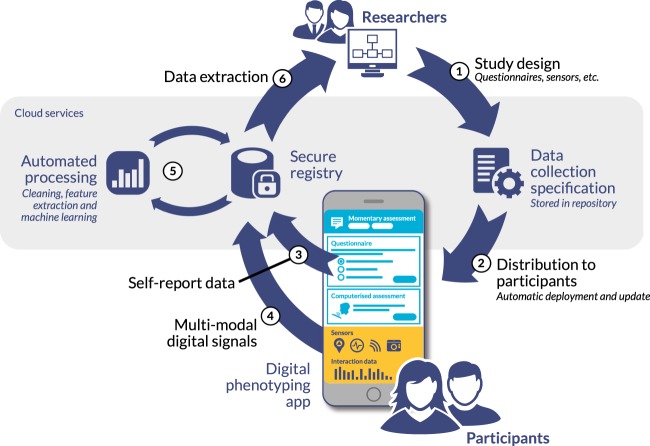Fig. 2.
Black Dog Institute/Deakin model for a scalable, integrated multi-user platform for digital phenotyping research Figures and letters refer to those shown in the diagram. In this model, (1) researchers specify the study design, define which questionnaires and sensors are required to deliver a digital phenotyping study (and optionally how these are integrated with any intervention components, such as self-guided therapy.) This specification is then hosted alongside others in a secure online repository. When each study commences, the specification is automatically downloaded (2) to users’ devices by a digital phenotyping app. This app can be a multi-study coordination tool that acts to coordinate data collection, a bespoke, study-specific data collection app, or a hybrid data collection intervention. Collected (3) self-report (e.g. questionnaires and momentary assessments) and (4) digital data (e.g. sensor measurements and device interaction data) is uploaded automatically to a secure online registry. Platform modules automatically manage potential barriers to data collection, such as user battery life and limited connectivity, through smart scheduling and caching. Automated processing pipeline (5) normalizes and converts raw data into standardized intermediate features and labelled outputs using machine learning. Researchers can start to extract registry data (6) as soon as it is received, accelerating analysis, permitting study designs that involve expert feedback, and allowing any data collection issues to be identified and addressed early in the research process. Rights management enables future researchers to request from users’ access to previously-collected data

